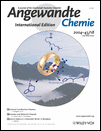Cascade Carbonylation Methods Leading to β-Diketones and β-Functionalized δ-Diketones†
This work was supported by a Grant-in-Aid for Scientific Research (B) from the Ministry of Education, Culture, Sports, Science, and Technology, Government of Japan. A.H. acknowledges support from CREST, Science and Technology Corporation (JST).
Graphical Abstract
A radical combination: An intermolecular cascade reaction involving alkyl halides, CO, electron-deficient alkenes, and stannyl enolates proceeds smoothly by a radical chain pathway to give four-component coupling products in good to high yields (see scheme). A series of 1,5-diketones with a substituent at the 3-position was prepared by this method.





